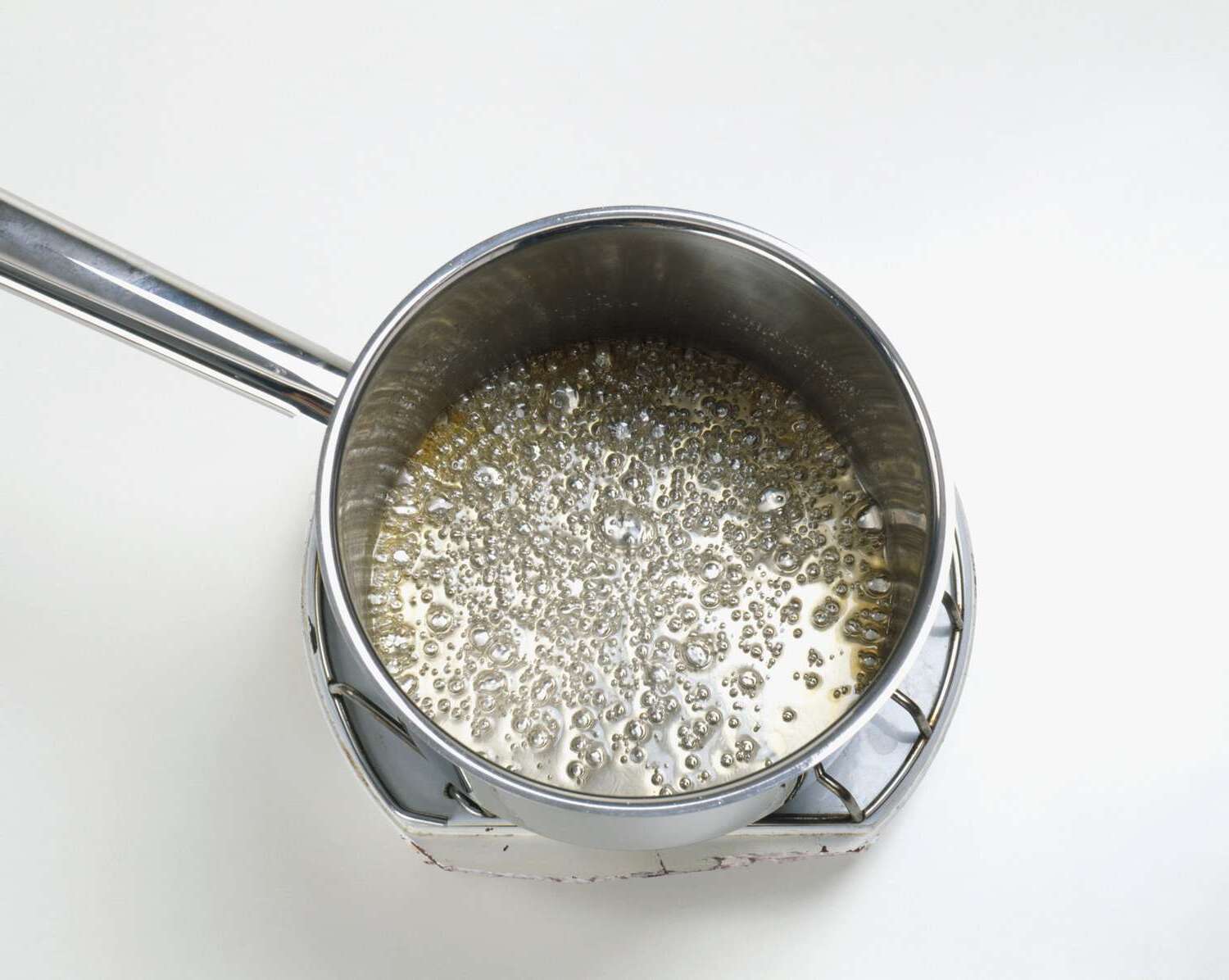
What is the boiling point? The boiling point is the temperature at which a liquid turns into vapor. This happens when the vapor pressure of the liquid equals the surrounding pressure. Why is it important? Knowing the boiling point helps in cooking, science experiments, and even in industrial processes. For instance, water boils at 100°C (212°F) at sea level, but this changes with altitude. What affects it? Factors like atmospheric pressure, impurities in the liquid, and even the type of liquid itself can change the boiling point. Why should you care? Understanding these factors can help you cook better, conduct more accurate experiments, and even understand weather patterns.
Key Takeaways:
- Boiling point is the temperature at which a liquid turns into vapor. It affects cooking, weather prediction, and even candy making. Understanding it is important for safety and everyday activities.
- Factors like altitude, impurities, and molecular structure influence boiling points. They're used in distillation, chemical manufacturing, and even brewing coffee. Boiling points are crucial in various scientific and practical applications.
What is Boiling Point?
The boiling point is a fundamental concept in science. It refers to the temperature at which a liquid turns into vapor. This process is crucial in various fields, from cooking to industrial applications. Here are some intriguing facts about boiling points.
-
Boiling Point Definition: The boiling point is the temperature at which the vapor pressure of a liquid equals the external pressure surrounding the liquid.
-
Water's Boiling Point: At sea level, water boils at 100°C (212°F). This is a standard reference point in many scientific calculations.
-
Altitude Effect: Higher altitudes have lower atmospheric pressure, causing water to boil at lower temperatures. For example, in Denver, Colorado, water boils at about 95°C (203°F).
-
Pressure Cookers: These devices increase the pressure inside the pot, raising the boiling point of water and cooking food faster.
-
Boiling Point of Mercury: Mercury, a liquid metal, has a boiling point of 356.7°C (674.1°F). It's used in thermometers and barometers due to its wide liquid range.
-
Ethanol's Boiling Point: Ethanol, found in alcoholic beverages, boils at 78.37°C (173.07°F). This property is utilized in distillation processes.
Factors Affecting Boiling Point
Several factors can influence the boiling point of a substance. Understanding these can help in various scientific and practical applications.
-
Impurities: Adding impurities to a liquid, like salt in water, raises its boiling point. This is known as boiling point elevation.
-
Molecular Structure: Substances with stronger intermolecular forces, like hydrogen bonds, have higher boiling points.
-
Atmospheric Pressure: As mentioned earlier, lower atmospheric pressure at higher altitudes lowers the boiling point.
-
Solvent-Solute Interactions: The type of solute and solvent can affect the boiling point. For instance, sugar in water raises the boiling point more than salt.
-
Polarity: Polar molecules tend to have higher boiling points due to stronger intermolecular attractions.
Boiling Point in Daily Life
The concept of boiling point isn't just for scientists. It plays a significant role in everyday activities.
-
Cooking: Boiling is a common cooking method. Knowing the boiling point of water helps in preparing various dishes.
-
Sterilization: Boiling water is an effective way to kill bacteria and other pathogens, making it a simple sterilization method.
-
Weather Prediction: Boiling points of various substances are used in weather instruments like barometers.
-
Making Candy: Candy making requires precise temperature control. The boiling point of sugar solutions determines the candy's texture.
-
Brewing Coffee: The boiling point of water affects coffee extraction. Water that's too hot can over-extract, making the coffee bitter.
Industrial Applications of Boiling Point
Industries rely on the boiling point of substances for various processes. Here are some examples.
-
Distillation: This process separates components based on their boiling points. It's used in producing alcohol, refining oil, and purifying water.
-
Chemical Manufacturing: Many chemical reactions require precise temperature control, often involving boiling points.
-
Refrigeration: Refrigerants have specific boiling points that allow them to absorb heat and cool spaces efficiently.
-
Pharmaceuticals: The boiling points of solvents are crucial in drug manufacturing and formulation.
-
Food Processing: Boiling points are essential in processes like pasteurization and canning.
Interesting Boiling Point Facts
Here are some lesser-known but fascinating facts about boiling points.
-
Superheating: Water can be heated above its boiling point without actually boiling. This occurs in very clean containers and can lead to explosive boiling when disturbed.
-
Boiling Point of Helium: Helium has the lowest boiling point of any element at -268.93°C (-452.07°F). It's used in cryogenics and superconducting magnets.
-
Boiling Point of Liquid Nitrogen: Liquid nitrogen boils at -195.79°C (-320.42°F). It's used in food preservation and scientific research.
-
Boiling Point of Glycerin: Glycerin, used in cosmetics and food, has a high boiling point of 290°C (554°F).
-
Boiling Point of Acetone: Acetone, a common solvent, boils at 56°C (132.8°F). It's used in nail polish remover and cleaning agents.
Boiling Point and Safety
Understanding boiling points is crucial for safety in various contexts.
-
Handling Chemicals: Knowing the boiling points of chemicals helps in safe handling and storage.
-
Fire Safety: Some substances have low boiling points and can easily vaporize, posing fire hazards.
-
Pressure Vessels: Equipment like boilers and autoclaves must be designed to handle the pressures and temperatures involved in boiling.
-
Laboratory Safety: Scientists must be aware of the boiling points of substances they work with to prevent accidents.
-
Household Safety: Understanding the boiling point of cooking oils can prevent kitchen fires. For example, olive oil has a boiling point of around 300°C (572°F).
-
Environmental Safety: Boiling points of pollutants determine their behavior in the environment, affecting air and water quality.
Boiling Point Facts: Final Thoughts
Understanding the boiling point of substances isn't just for science class. It plays a crucial role in everyday life, from cooking to industrial processes. Knowing that water boils at 100°C (212°F) at sea level helps us cook food properly. But did you know that at higher altitudes, water boils at lower temperatures? This affects cooking times and methods.
Boiling points also help in identifying substances and understanding their properties. For instance, the boiling point of ethanol is 78.37°C (173.07°F), which is why it evaporates faster than water. This knowledge is vital in fields like chemistry and engineering.
So, next time you see water boiling, remember there's more to it than meets the eye. It's a fascinating interplay of temperature, pressure, and molecular structure. Keep these facts in mind, and you'll appreciate the science behind everyday phenomena.
Frequently Asked Questions
Was this page helpful?
Our commitment to delivering trustworthy and engaging content is at the heart of what we do. Each fact on our site is contributed by real users like you, bringing a wealth of diverse insights and information. To ensure the highest standards of accuracy and reliability, our dedicated editors meticulously review each submission. This process guarantees that the facts we share are not only fascinating but also credible. Trust in our commitment to quality and authenticity as you explore and learn with us.


